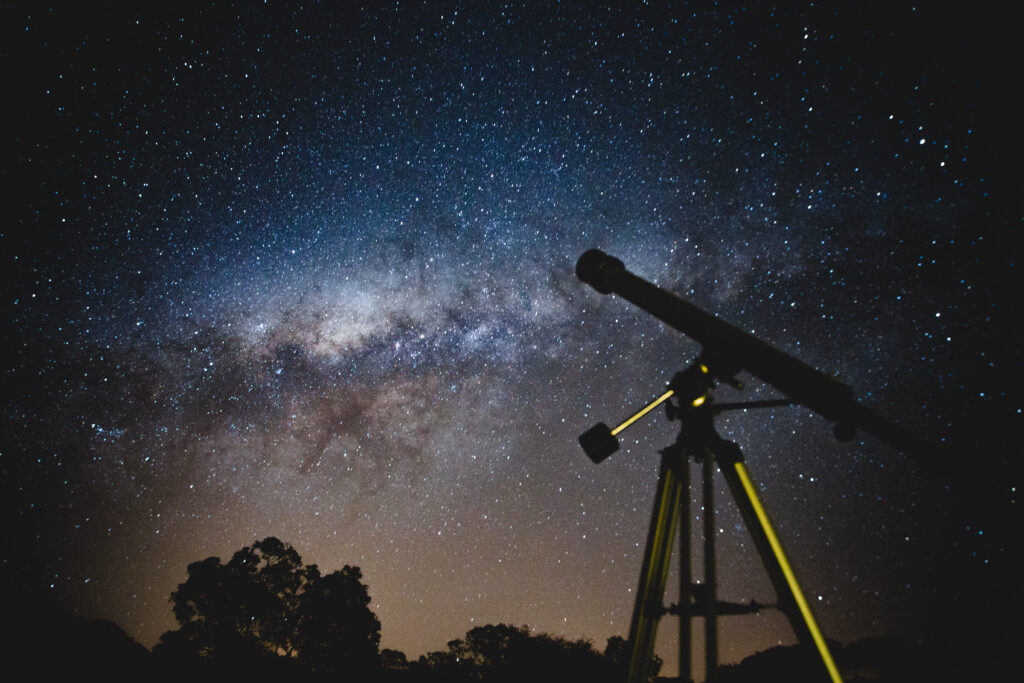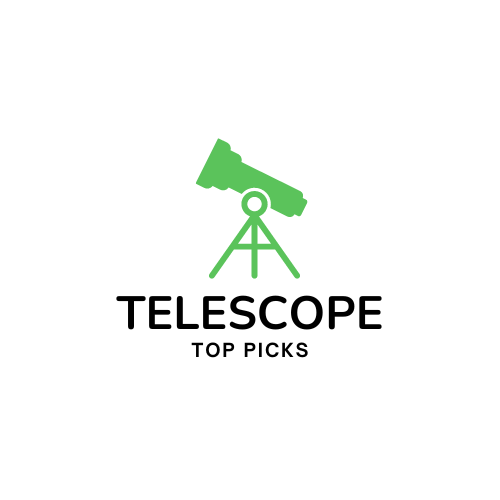
If you’ve ever wondered how to improve the clarity and sharpness of your telescope’s view, then you’re in the right place. In this article, you’ll discover step-by-step instructions on how to collimate your telescope, a process that aligns the optical elements of your equipment, ensuring optimal performance and breathtaking views of the cosmos. Whether you’re a seasoned astronomer or just starting out, collimating your telescope is a skill that will greatly enhance your stargazing experience. So, let’s get started and unlock the secrets to achieving crystal-clear images of the night sky.

What is Telescope Collimation?
Telescope collimation refers to the process of aligning the various optical elements within a telescope to ensure that they are in perfect alignment and working together to provide crisp and clear views of celestial objects. This includes aligning the mirrors or lenses in reflecting and refracting telescopes, as well as the secondary mirrors in compound telescopes. Collimation is an essential maintenance task for any telescope owner, as it directly impacts the quality of the images produced.
Definition of Telescope Collimation
Telescope collimation involves adjusting the optical elements within a telescope to ensure that they are aligned properly. By aligning the mirrors or lenses, it ensures that the incoming light from celestial objects is properly focused onto the eyepiece or camera, resulting in sharp and clear images. Collimation is necessary because over time, changes in temperature, transportation, or even accidental bumps can cause misalignment in the optical setup of the telescope.
Importance of Collimating a Telescope
Collimating your telescope is crucial for achieving the best possible views of astronomical objects. Misalignment of the optical elements can result in image aberrations such as blurry or distorted images, reduced contrast, or even completely out-of-focus views. By regularly collimating your telescope, you can ensure that it performs optimally, providing you with clear and detailed views of the night sky.
Tools Required for Collimation
To collimate your telescope, you’ll need a few essential tools:
Collimation Eyepiece
A collimation eyepiece, also known as a crosshair eyepiece, is a specialized eyepiece that helps with aligning the optical elements. It features a target with crosshairs, allowing you to precisely center the optical elements during the collimation process.
Allen Wrench or Screwdriver
Depending on the type of telescope you have, you may need an Allen wrench or a screwdriver to make adjustments to the telescope’s mirror or lens cell. These tools are essential for fine-tuning the alignment during the collimation process.
Cheshire Collimator
A Cheshire collimator is another useful tool for collimating telescopes, especially Newtonian reflector telescopes. It helps align the primary and secondary mirrors accurately.
Collimation Cap
A collimation cap is a simple tool that can be used to achieve a rough alignment of the telescope’s optical elements. It is particularly useful for initial setup or quick adjustments in the field.
Star Test
While not a physical tool, the star test is a method used to evaluate and refine the collimation of a telescope. By observing how a star appears in the eyepiece, you can make adjustments to improve the alignment.

Types of Telescopes
Telescopes come in various designs, each with its own unique characteristics and collimation procedures. Here are some of the most common types of telescopes:
Reflecting Telescopes
Reflecting telescopes use mirrors to gather and focus light. They typically have a primary mirror at the bottom of the telescope tube and a secondary mirror near the top. Collimating a reflecting telescope involves adjusting these mirrors to ensure they are properly aligned.
Refracting Telescopes
Refracting telescopes use lenses instead of mirrors to gather and focus light. They have an objective lens at the front of the telescope and an eyepiece at the back. Collimating a refracting telescope involves aligning these optical elements.
Schmidt-Cassegrain Telescopes (SCTs)
Schmidt-Cassegrain telescopes, or SCTs, are a type of compound telescope that combines lenses and mirrors to achieve a compact design. Collimating an SCT requires adjustments to both the secondary mirror and the corrector plate.
Maksutov-Cassegrain Telescopes (MCTs)
Maksutov-Cassegrain telescopes, or MCTs, are also compound telescopes but have a different optical design compared to SCTs. Collimating an MCT involves adjusting the corrector plate and secondary mirror.
Compound Telescopes
Compound telescopes, including SCTs and MCTs, have a combination of mirrors and lenses. Collimating these telescopes requires adjustments to multiple optical elements, ensuring their proper alignment.
Reflecting Telescope Collimation
Collimating a reflecting telescope is a multi-step process that involves adjusting the primary and secondary mirrors. Here’s a step-by-step guide on how to collimate a reflecting telescope:
Primary Mirror Adjustments
To begin, align the primary mirror by adjusting the three collimation screws located at the back of the telescope. Use a collimation cap or eyepiece to center the reflection of the primary mirror.
Secondary Mirror Adjustments
Next, adjust the secondary mirror by using a collimation cap or a Cheshire collimator. The goal is to position the secondary mirror perfectly centered under the focuser tube.
Using a Collimation Cap
A collimation cap can be used to achieve a rough alignment of the optical elements by observing the reflection of the primary mirror in the cap. Adjust the primary mirror until its reflection is centered within the cap.
Using a Cheshire Collimator
For more precise adjustments, a Cheshire collimator can be used. Insert the collimator into the focuser and adjust the primary mirror until the reflection of the secondary mirror is perfectly centered within the collimator’s view.

Refracting Telescope Collimation
Collimating a refracting telescope involves aligning the objective lens and the eyepiece. Here’s a step-by-step guide on how to collimate a refracting telescope:
Aligning the Objectives and Eyepiece
Begin by ensuring that the objective lens and eyepiece are properly aligned by visually inspecting their position within the telescope’s tube. Make any necessary adjustments to align them parallel to each other.
Adjusting the Lens Cell
Some refracting telescopes have a lens cell that can be adjusted to fine-tune the alignment of the objective lens. Follow the manufacturer’s instructions for adjusting the lens cell if necessary.
Testing Collimation with a Star
To further refine the collimation, perform a star test. Choose a bright star and defocus it slightly in the eyepiece. Observe the resulting pattern of light and make any adjustments to the collimation as needed to achieve a symmetrical pattern.
Collimating Schmidt-Cassegrain Telescopes (SCTs)
Collimating an SCT involves adjusting both the secondary mirror and the corrector plate. Here’s how to collimate an SCT:
Using a Collimation Eyepiece
Start by inserting a collimation eyepiece into the focuser. Adjust the primary mirror using the collimation screws until the reflection of the secondary mirror appears centered within the eyepiece.
Using a Star Collimation Method
To further refine the collimation, perform a star collimation test. Choose a bright star and defocus it slightly in the eyepiece. Observe the resulting pattern of light and make any adjustments to the collimation as needed.
Collimating Maksutov-Cassegrain Telescopes (MCTs)
Collimating an MCT involves adjusting the corrector plate and the secondary mirror. Here’s how to collimate an MCT:
Adjusting the Corrector Plate
Begin by adjusting the corrector plate using the collimation screws or knobs located around its edge. Make small adjustments and check the collimation using a star or a collimation eyepiece.
Testing Collimation with a Star
Perform a star test by observing the defocused image of a star in the eyepiece. Make any necessary adjustments to the corrector plate or secondary mirror to achieve symmetrical light patterns.
Fine-tuning Using a Collimation Eyepiece
For precise adjustments, use a collimation eyepiece to verify collimation accuracy. Adjust the secondary mirror as needed to center the reflection within the eyepiece.
Collimating Compound Telescopes
Collimating compound telescopes involves adjusting both the primary and secondary mirrors. Here’s a guide on collimating compound telescopes:
Collimating the Primary Mirror
Make adjustments to the primary mirror by using collimation screws or knobs. Center the reflection of the secondary mirror within the eyepiece or collimation cap.
Collimating the Secondary Mirror
Adjust the secondary mirror by using collimation screws or knobs. The goal is to center the reflection of the primary mirror within the eyepiece or collimation cap.
Common Issues in Collimation
During the collimation process, several issues may arise that can affect image quality:
Spherical Aberration
Spherical aberration occurs when the mirror or lens is not perfectly shaped, resulting in a loss of image quality. Adjustments to the collimation can help reduce spherical aberration and restore image sharpness.
Coma
Coma is an aberration that causes stars near the edges of the field of view to appear distorted. Proper collimation can minimize coma and produce more accurate and uniform star images.
Astigmatism
Astigmatism occurs when the optical elements are not aligned properly. It can result in elongated or distorted star images. Collimating the telescope can correct astigmatism and improve image quality.
Miscollimation
Miscollimation refers to any misalignment of the optical elements that affects image clarity. Regularly checking and maintaining collimation can prevent miscollimation and ensure optimal telescope performance.
Tips for Successful Collimation
Here are some tips to help you successfully collimate your telescope:
Perform Collimation in a Well-Lit Area
Collimating your telescope in a well-lit area will make it easier to see and make fine adjustments to the optical elements. Adequate lighting can help you achieve more accurate collimation.
Be Patient and Take Your Time
Collimating a telescope requires precision and patience. Take your time with each adjustment and make sure to evaluate the results before moving on to the next step. Rushing the process may lead to less accurate collimation.
Start with Rough Adjustments before Fine-Tuning
Begin by making rough adjustments to the collimation using tools like collimation caps or Cheshire collimators. Once you achieve rough alignment, use more precise tools like collimation eyepieces or star tests to fine-tune the collimation.
Follow Manufacturer’s Instructions
Different telescopes may have specific collimation procedures outlined by the manufacturer. Always refer to the manufacturer’s instructions for the specific model of telescope you own to ensure proper collimation.
Regularly Check and Maintain Collimation
Collimation should be a routine maintenance task for any telescope owner. Regularly check the collimation of your telescope and make any necessary adjustments to maintain optimal performance.
Collimating your telescope may initially seem intimidating, but with a little practice, it becomes a routine task. By following the appropriate collimation procedures for your specific type of telescope and regularly maintaining proper alignment, you can enjoy clear and stunning views of the universe. So grab your tools, take your time, and start collimating your telescope for a glimpse into the wonders of the night sky.








